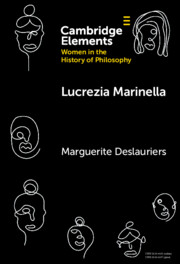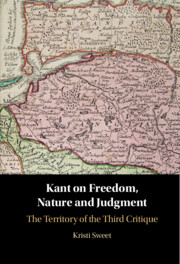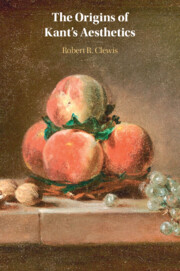89 results
Chapter 6 - The Human Person in the Consolation of Philosophy
-
-
- Book:
- Boethius’ ‘Consolation of Philosophy’
- Published online:
- 23 May 2024
- Print publication:
- 30 May 2024, pp 98-115
-
- Chapter
- Export citation
Chapter 3 - How Should I Live?
-
- Book:
- Neoplatonic Pedagogy and the Alcibiades I
- Published online:
- 16 May 2024
- Print publication:
- 23 May 2024, pp 75-151
-
- Chapter
- Export citation
8 - The Sexual Body in History
-
-
- Book:
- The Cambridge World History of Sexualities
- Published online:
- 26 April 2024
- Print publication:
- 16 May 2024, pp 159-182
-
- Chapter
- Export citation
Sex Matters: The Impact of Skin Tone on Perceived Levels of Attraction
-
- Journal:
- Du Bois Review: Social Science Research on Race , First View
- Published online by Cambridge University Press:
- 29 April 2024, pp. 1-23
-
- Article
- Export citation
4 - Nietzsche on the Task of the Poets in His Middle Writings
-
-
- Book:
- Nietzsche and Literary Studies
- Published online:
- 03 May 2024
- Print publication:
- 25 April 2024, pp 91-120
-
- Chapter
- Export citation

Lucrezia Marinella
-
- Published online:
- 22 March 2024
- Print publication:
- 18 April 2024
-
- Element
-
- You have access
- HTML
- Export citation
CYNTHIA'S BIRTHDAY ACROSTIC (3.10.1–5): PROPERTIUS ON ELEGIAC TIME AND ETERNITY
-
- Journal:
- The Classical Quarterly / Volume 73 / Issue 2 / December 2023
- Published online by Cambridge University Press:
- 14 February 2024, pp. 714-720
- Print publication:
- December 2023
-
- Article
-
- You have access
- Open access
- HTML
- Export citation
Chapter 6 - Form, Matter, and Metaphysics in Walter Pater’s Essay on ‘Style’
- from Part I - General
-
-
- Book:
- Walter Pater and the Beginnings of English Studies
- Published online:
- 14 November 2023
- Print publication:
- 09 November 2023, pp 118-132
-
- Chapter
- Export citation
Aquinas's Fourth Way, Beauty, and Virtues
-
- Journal:
- New Blackfriars / Volume 104 / Issue 1114 / November 2023
- Published online by Cambridge University Press:
- 01 January 2024, pp. 751-764
- Print publication:
- November 2023
-
- Article
- Export citation
25 - The Object of Our Gaze: Visual Perception as a Mode of Knowing
-
-
- Book:
- The Intellectual World of Late Antique Christianity
- Published online:
- 05 October 2023
- Print publication:
- 26 October 2023, pp 466-483
-
- Chapter
- Export citation
Chapter 6 - Philebus and Statesman
-
- Book:
- Plato's Moral Realism
- Published online:
- 28 July 2023
- Print publication:
- 24 August 2023, pp 171-189
-
- Chapter
- Export citation
4 - Our Relationship with the Land
- from Part I - Challenges
-
-
- Book:
- Representations and Rights of the Environment
- Published online:
- 16 March 2023
- Print publication:
- 06 April 2023, pp 87-109
-
- Chapter
- Export citation

Kant on Freedom, Nature, and Judgment
- The Territory of the Third Critique
-
- Published online:
- 07 August 2023
- Print publication:
- 09 February 2023
2 - Beauty Free
- from Part I - Aesthetic Judgment and Beauty
-
- Book:
- The Origins of Kant's Aesthetics
- Published online:
- 10 January 2024
- Print publication:
- 26 January 2023, pp 51-69
-
- Chapter
- Export citation

The Origins of Kant's Aesthetics
-
- Published online:
- 10 January 2024
- Print publication:
- 26 January 2023
1 - On Rules of Taste
- from Part I - Aesthetic Judgment and Beauty
-
- Book:
- The Origins of Kant's Aesthetics
- Published online:
- 10 January 2024
- Print publication:
- 26 January 2023, pp 23-50
-
- Chapter
- Export citation
Introduction
-
- Book:
- The Origins of Kant's Aesthetics
- Published online:
- 10 January 2024
- Print publication:
- 26 January 2023, pp 1-20
-
- Chapter
- Export citation
Not in the Eye of the Beholder: Racialization, Whiteness, and Beauty Standards in Mexico
-
- Journal:
- Latin American Research Review / Volume 58 / Issue 2 / June 2023
- Published online by Cambridge University Press:
- 16 January 2023, pp. 422-439
-
- Article
-
- You have access
- Open access
- HTML
- Export citation
Chapter 29 - Wilfred Owen (1893–1918)
- from Part III - Poets
-
-
- Book:
- A History of World War One Poetry
- Published online:
- 18 January 2023
- Print publication:
- 12 January 2023, pp 473-487
-
- Chapter
- Export citation
Chapter 28 - Ivor Gurney (1890–1937)
- from Part III - Poets
-
-
- Book:
- A History of World War One Poetry
- Published online:
- 18 January 2023
- Print publication:
- 12 January 2023, pp 457-472
-
- Chapter
- Export citation



